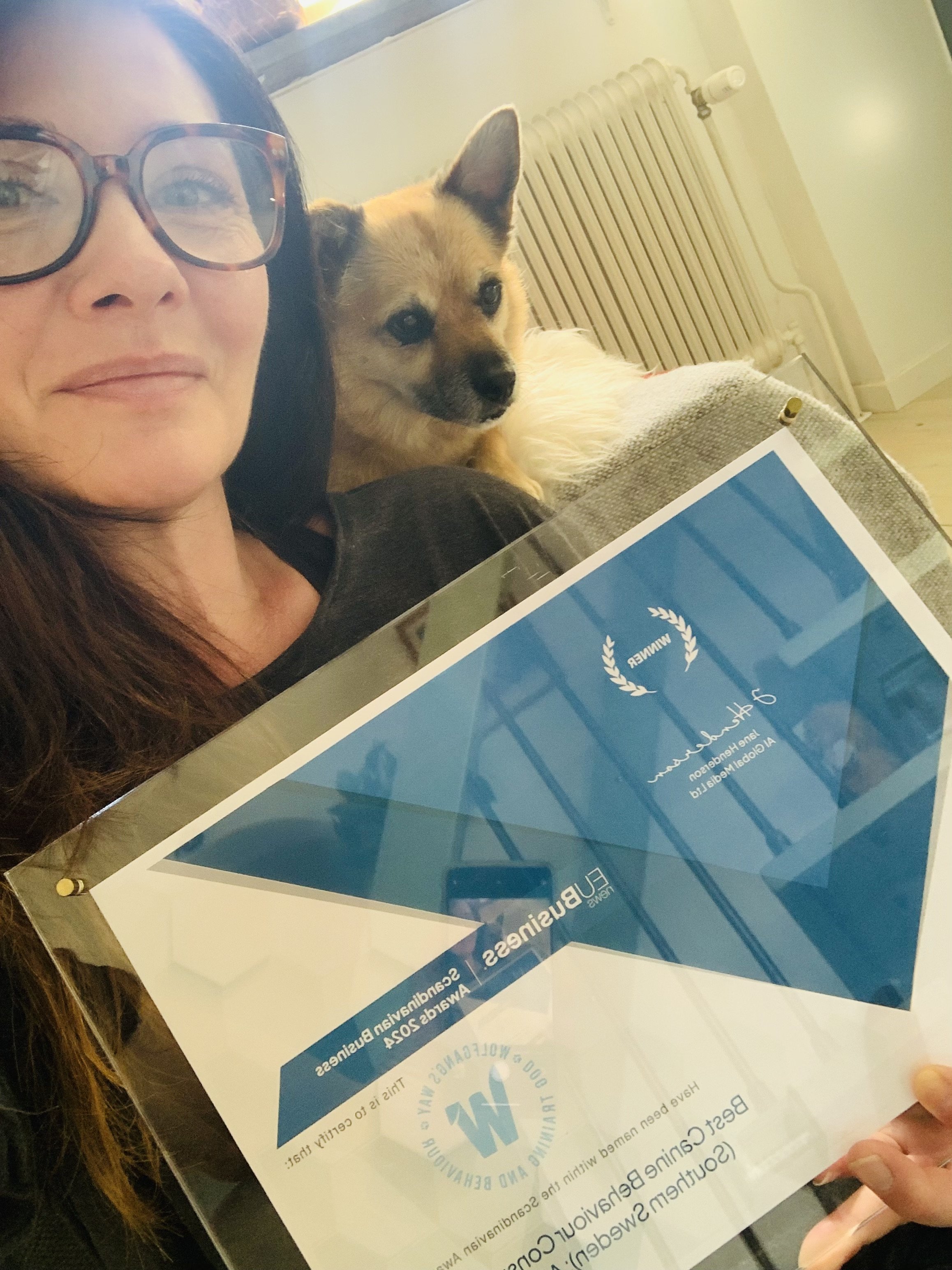I asked chat gpt to give me the top 10 issues owners of dogs with separation anxiety struggle with.
Here they are and my top line thoughts and advice for each one of them.

Wolfgang and I are so very excited to announce that we’ve won the Award for ‘Leading Specialist in Canine Separation Anxiety Behaviour & Dog Trainer of the Year - Sweden’ in the 2025 Scandinavian Business Awards (run by EU Business News Magazine).
In its sixth year, the Scandinavian Business Awards continue to be a vital and inspirational source of information of a collection of award-worthy contributors to various industries across the region and we couldn’t be more thrilled to have been included.
Awards Coordinator Melissa Bramall: “Working with my fellow team members, it has been a pleasure to not only recognise a fine selection of businesses and individuals but also to reward them with their titles. They are truly altering their spheres and being part of their journey of success is a delight. Congratulations again.”
Thank you to all my clients who took the time to provide testimonials and review my services, which was a huge decision factor for the judging panel.
THANK YOUUUUUUUUU
And now we are off to celebrate with a bacon and sausage cake for the little furry Missus. After all, Wolfgang’s Way Dog Training wouldn’t exist without her!
Traditionally, dog training has been, and is, done in person, within a group class or 121 with a trainer.
However, many basic puppy and/ or dog training exercises, or working on behavioural ‘issues’, actually don’t require the trainer to be present or ‘do the training’ in person.
After all, what is most important is that the dog’s guardian learns ‘how to’ work with their dog, how to manage their dog’s environment, how to provide the right physical and mental enrichment and so forth.
Did you know that where you start your dog's separation anxiety training can make all the difference?
Your and your dog's break area is their calm place — the spot where absence training begins and where they remain settled, or go back to, throughout each training exercise.
Getting this setup right helps your dog feel more secure and sets the foundation for a smoother training journey.
OVERWHELM / PAIN OR DISCOMFORT / YOUR EXPECTATIONS
One, or more, of these three reasons might just be why your dog won’t stop pulling on leash.
Albeit your very best efforts to patiently, and positively, train your dog to walk with you, rather than drag you sailing down every path or road.
Is your dog overwhelmed? This can be excitement, or fear, or frustration, or a bit of everything. And this happens often with young dogs, puppies and adolescent dogs.
Your dog may have some discomfort or pain and walking slowly, at your pace, could elevate the discomfort. Observe your dog’s gait: at the beginning of a walk, at the end, after they’ve been resting etc. Check in with your vet!
Are you expecting too much? Teaching a reliable loose leash walk takes time and dedication, don’t expect too much too soon from your young dog. Does your dog really have to walk by your side all the time? Try giving your dog a slightly longer leash (in the right environment), maybe they simply prefer walking a little ahead of you.
There are of course many other reasons why your dog may be pulling on leash and if you feel you could do with some help, please get in touch.
Phantom pregnancy, also known as pseudopregnancy or false pregnancy, is a condition where an intact female dog exhibits signs of pregnancy despite not being pregnant.
This phenomenon is primarily due to hormonal fluctuations and understanding how a phantom pregnancy can impact a dog's behaviour, especially concerning separation anxiety, is crucial for effective training and overall well-being.
Resource Guarding is one of the most natural behaviours, for us humans and for our dogs.
🐶 It’s just that when our dogs do it, let’s say ‘excessively’ from our point of view, it doesn’t fit into our lifestyle.
💜 The key to addressing resource guarding is understanding, not confrontation.
➡️➡️ Instead of punishing your dog for growling or snapping - simply behaviours that communicate their discomfort - focus on:
✅ building trust (counter conditioning)
✅ management (avoiding situations where your dog feels the need to)
✅ positively teaching new skills that will allow you and your dog to easily navigate these situations (drop, leave, hand target, back, off, etc).
🛑 also rule out underlying heath niggles (you’d be surprised by how much GI issues or pain/ discomfort can play into resource guarding behaviours).
🐾 and ensure your dog’s basic needs are met, from providing them with a safe place to rest to being able to eat in peace.
Separation anxiety in dogs can be challenging, affecting not only your dog’s happiness but also your daily life.
💔 If your dog becomes distressed when left alone, barking, whining, or becoming destructive, you’re not alone. Many dog owners face this issue, and it can be heartbreaking to see your pet struggle.
It's that time of year (for most of us). The summer holidays are coming to an end and we're back to the grindstone. Our dogs, meanwhile, have gotten used to having us around 24/7 and are now faced with home alone time…and some of them might be struggling with this.
Here are some tips to help your furry friend adjust

Very excited to announce that we have won another Award 🎉🎉🎉🎉
🐾 'Best Canine Behaviour Consultant 2024 (Southern Sweden)' at the Scandinavian Business Awards.
🙏 A massive thanks to all my wonderful clients who’ve taken the time and have left me great testimonials which hugely impacted on the judging panel’s decision.
🐕 And the biggest thanks to the one and only, Miss Wolfgang. This one is yours my little golden nugget ❤️
We accept Klarna payment